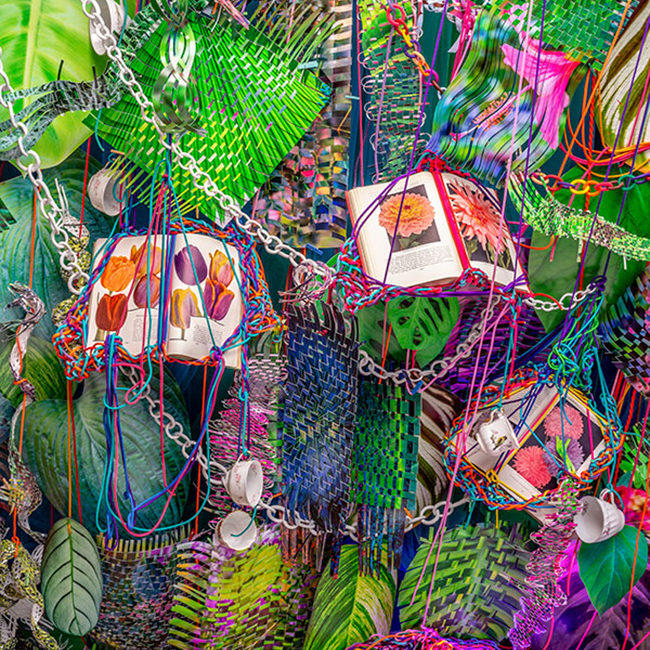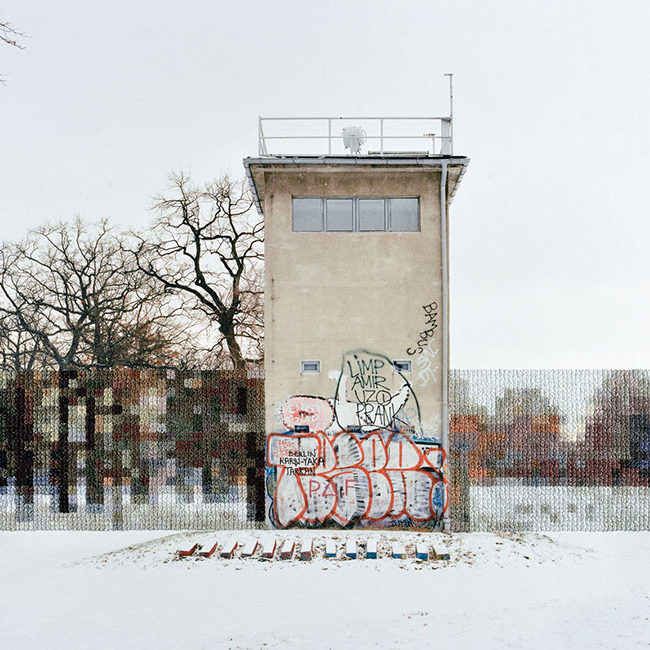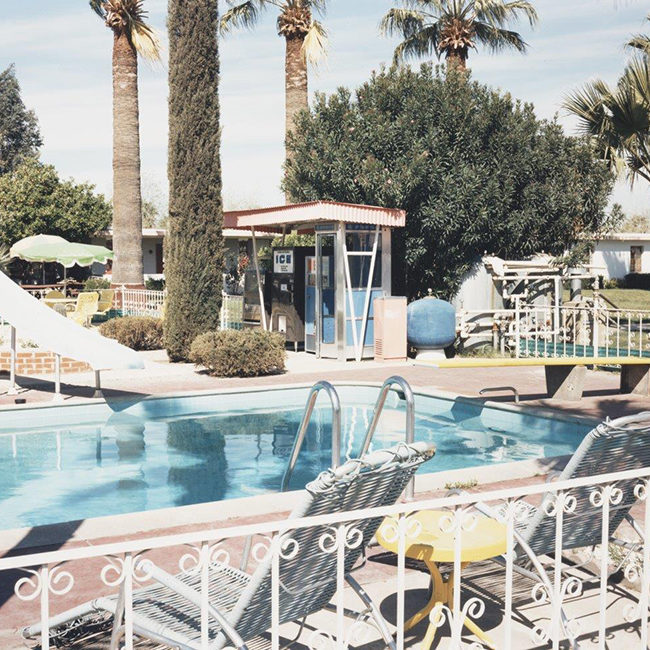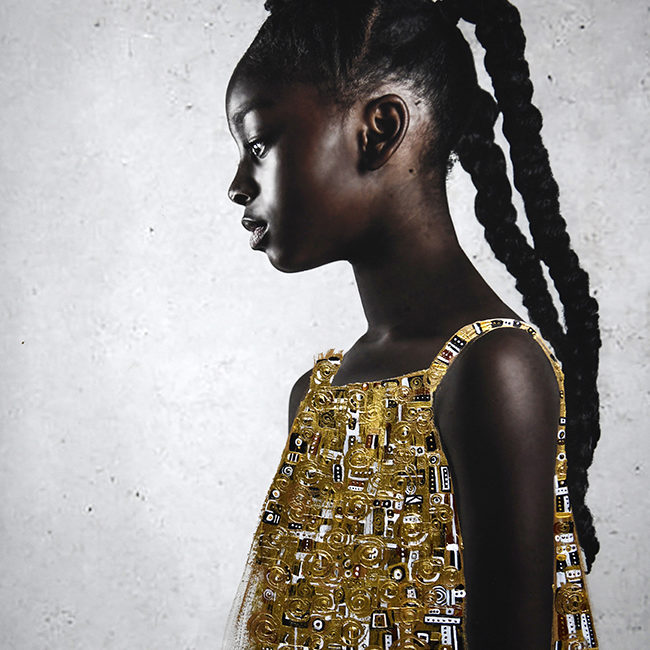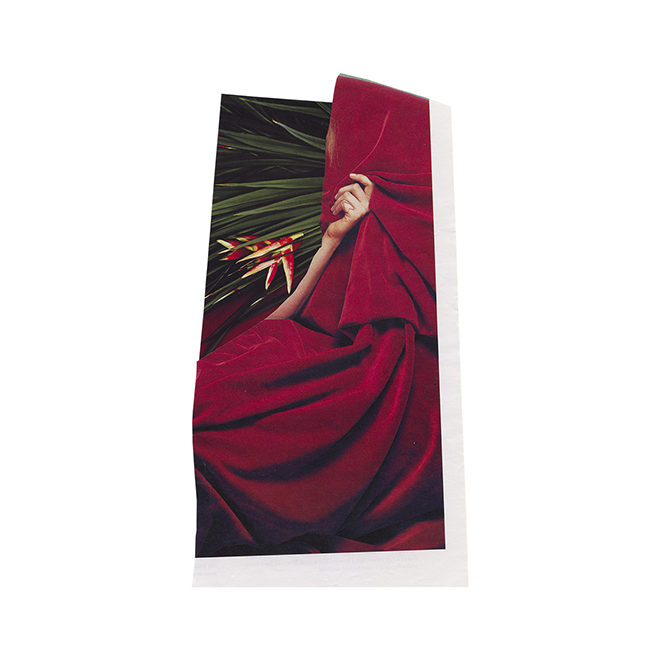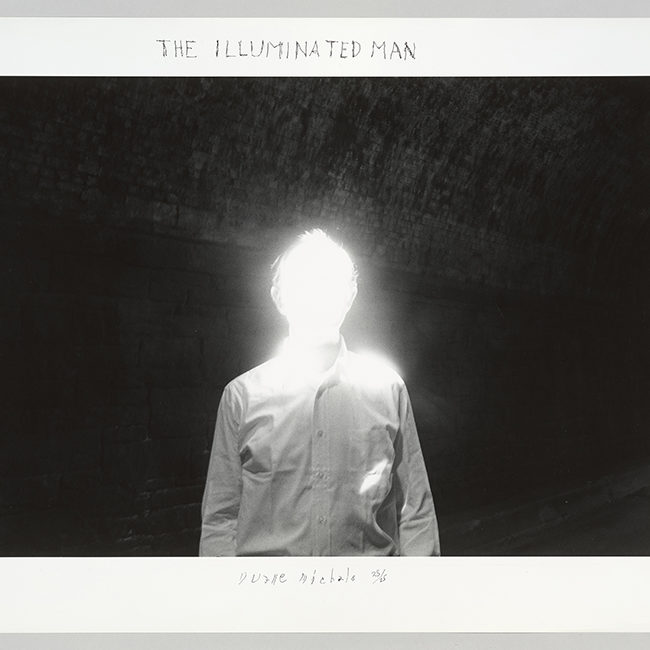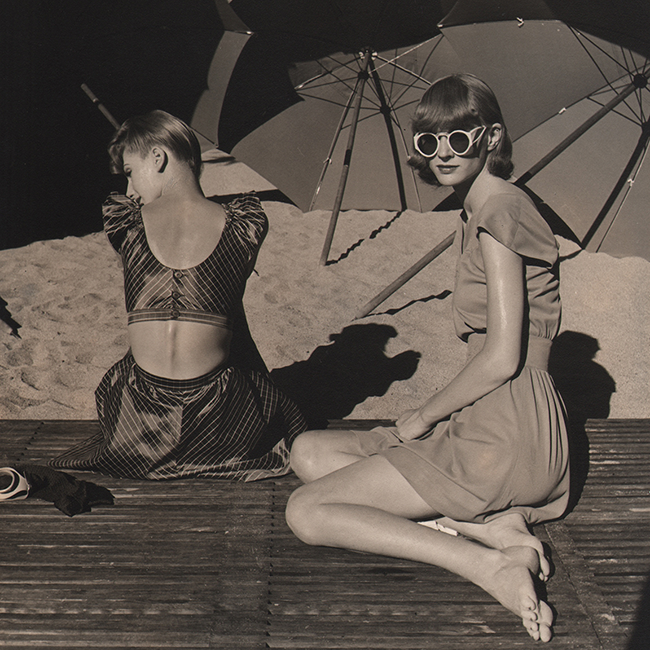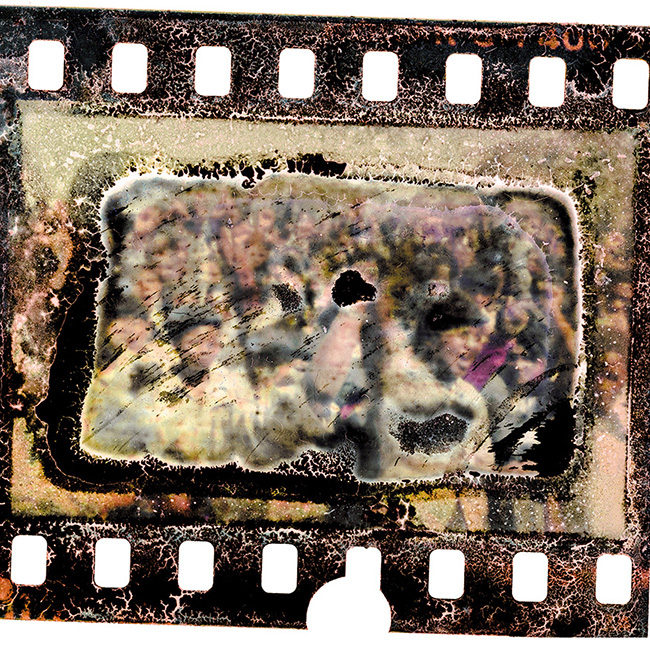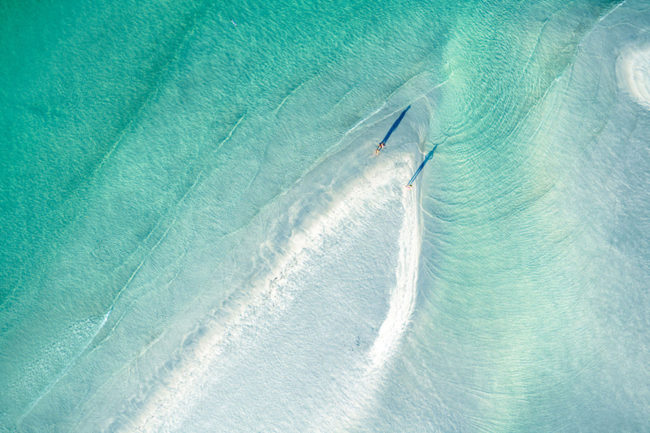Shane Lavalette’s series explores the South through the eyes of someone who didn’t grow up there. Originally commissioned by the High Museum of Art in Atlanta, and recently self-published as a book, One Sun, One Shadow is organized around the idea of the music of the South—a challenging proposition. In the book’s essay, Tim Davis writes that a “photography project about music sounds like an opera about Helen Keller.” But Lavalette makes subtle connections, picturing a long-haired guy holding a banjo in a misty field, and a man in a suit playing keyboards, his striped tie echoing the black and white keys. Elsewhere we see a treble clef on a woman’s t-shirt and rooms hung with French horns or dusty disco balls. Subtler still is the music made by nature that some images imply—the sound that might come from blue and green bottles hanging from a tree branch, or from birds that fill the sky or line up in a cage on a porch. Davis writes that “Lavalette smartly decided not to make a documentary about musicians. He instead scoured the landscape looking for the feeling coming from the music.” Lavelette tells PDN about the project in an edited email interview.
PDN: How did the High Museum commission come about?
Shane Lavalette: In 2010, I was asked by the High to create a new body of work for their “Picturing the South” series, which would become an exhibition in 2012. I spent two summers traveling and making photographs, with traditional music as my subject and inspiration. At the time I was listening to some old time, blues, and gospel records, and was really fascinated by the stories in the songs, and the idea of music as an oral history. I wanted to in some way explore the history of music in the South, but photographically I sought to look at the relationship between music and the landscape—the musicality of every day life. I see music as intrinsically linked to the place where it is made, and also as one of the ways in which we understand a place we haven’t been to. Growing up in Vermont and living in various places in the Northeast, I had not spent time in the South, so music also served as a familiar point of departure.
PDN: What were some of the challenges of shooting the commission? Did you have a book in mind as a final form when you began the project? What were the challenges of making the book?
S.L.: I think with any commission it is a challenge to make work under some pressure, but for me this was also such an incredible and exciting opportunity as a young artist. The biggest challenge was probably the editing process, after shooting so many images. I wanted to keep traveling and continue shooting, but the project had to come to a close. From the very beginning, I imagined a book as the final form that the project would take. I was really interested in the photobook as a way to further explore the musicality of images, with a careful edit and sequence. There were a lot of logistical challenges to overcome in self-publishing the book, but I’m really happy with the outcome and it’s really wonderful to see the book have its own life out in the world.
PDN: Is there a particular soundtrack you have in mind for the project?
S.L.: While driving around photographing, I often listened to mixes that I had made, which included Southern songs as well as some that take inspiration from that lineage. They included the likes of Blind Willie Johnson, Clarence Ashley, Elizabeth Cotten, Doc Watson, The Fairfield Four, Kokomo Arnold, Dock Boggs, Snuffy Jenkins, Howlin’ Wolf, Lightnin’ Hopkins, Jack Rose, Sam Amidon, and Nina Simone, among others. While traveling, I of course discovered a lot of great music too.
Related Stories:
Southern Charm
The Secret Lives of Drummers
How To Sell Your Photos Professionally
